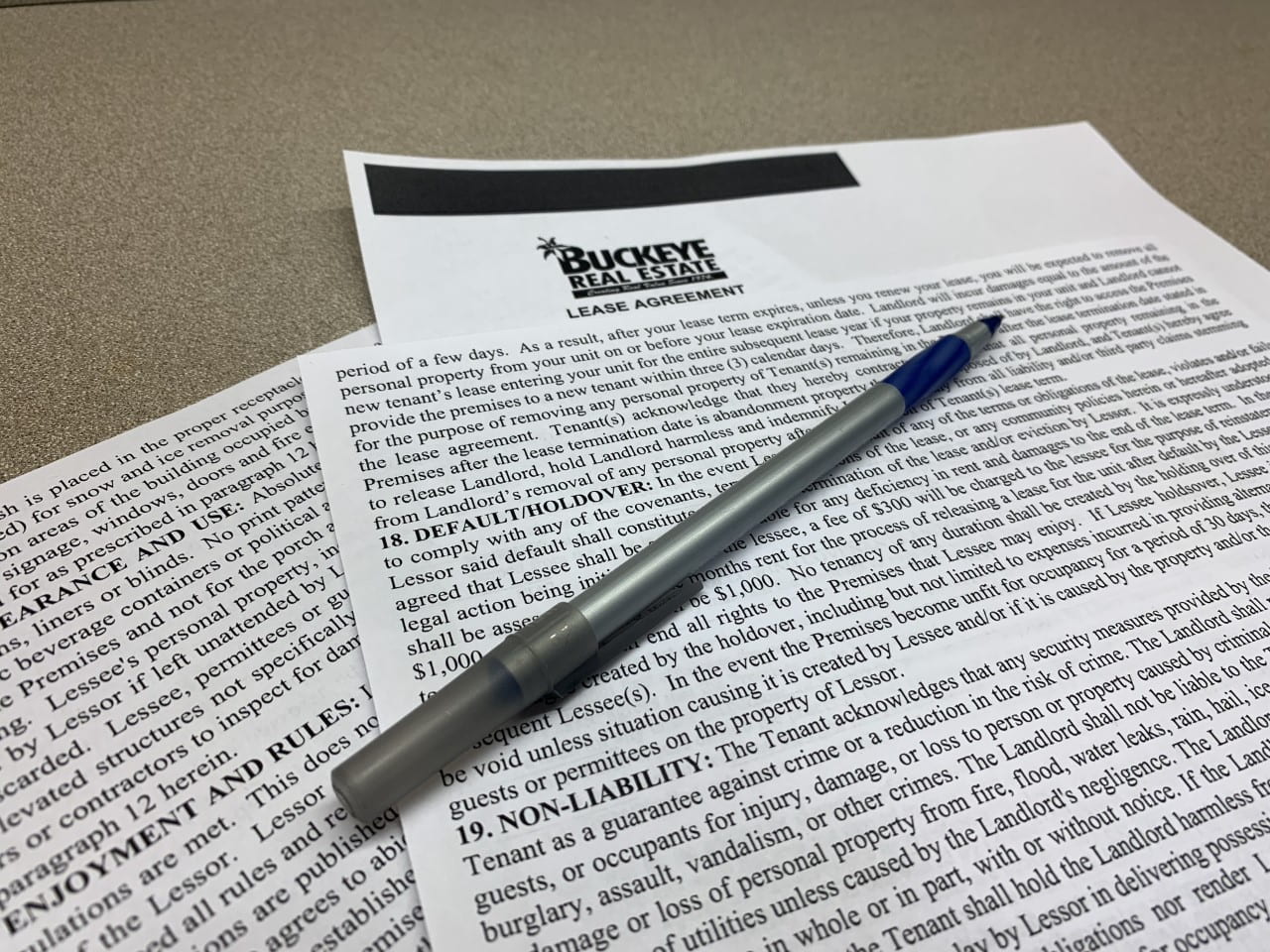
Every year like clockwork, fall rolls around and Ohio State students start looking for off-campus housing for the next academic year and signing their first major legal document: leases. Credit: Danny Fogarty | Lantern Reporter
Every year like clockwork, fall rolls around and Ohio State students start looking for off-campus housing for the next academic year and signing their first major legal document: leases.
What happens if a student wants — or needs — to get out of a lease?
“It is certainly an issue we are very familiar with,” Paul Wilkins, a senior staff attorney at Student Legal Services, said.
Wilkins said due to COVID-19, he’s seen more tenants want to break leases than previous years. But he said tenants must first build a good case for leaving.
“People want to get out of their leases for a number of reasons: a change in family status, a parent loses a job or the students themselves might have some financial difficulties,” Wilkins said. “The pandemic has certainly brought it to the forefront.”
Reasons a tenant can break a lease are spelled out in the Landlord-Tenant Act, which outlines the responsibilities tenants have to their landlords and vice versa. It covers normal procedures such as security deposits and issues with paying rent, but also lists acceptable reasons to break a lease.
However, the list is fairly short.
“The only way that a tenant has a right to break a lease under the Ohio Landlord-Tenant Act is if the landlord fails to make repairs or fails in one of his landlord-tenant duties,” Wilkins said.
Wilkins said other reasons include violations such as a landlord entering an apartment without prior notification or permission.
If a lease can be broken, Student Legal Services has advice to help.
Know what you’re signing and get some help
Wilkins said the problem is that most students do not know how to begin the process.
Students need to know, in writing, what ramifications they could face by breaking a lease. If a student doesn’t have a valid reason, they could end up owing the entirety of the rent for the leased period.
To understand this better, Wilkins said an attorney will better know if reasoning is adequate and what costs will be involved. Essentially, a lawyer is a personal guide toward escaping a lease.
Find a replacement
Wilkins said all that matters is landlords get the money promised in the lease, and it matters less from whom.
If the criteria isn’t necessarily met to break a lease, there are three main options: sublease, assignment or a buyout.
For a sublease, a person agrees to pay the rent and other expenses in place of another while the original name remains on the lease, Wilkins said. Landlord permission is needed for this option.
For an assignment, the landlord agrees to replace a tenant with a new person and remove the original name from the lease.
However, Wilkins said landlords are not required to sublease or assign a lease, so it is best to talk with them about it.
The last option, and likely the least desired among students, is a buyout. Wilkins said it is essentially paying the landlord in advance for a few months that they would need to release the residence. This can be expensive, so it is a last resort for most people.
Know that every situation is unique
Every landlord has a unique way of doing things, so it is important to know these rules and how the landlord treats leases, Wilkins said.
“Once you sign the lease, you are responsible for any money under that lease,” Wilkins said.
The process of the lease’s termination depends on whether the money can be paid off or if there is a justified reason to not have it be paid. He said it just takes calculation, hard work and time.
An experienced attorney doesn’t hurt either.


